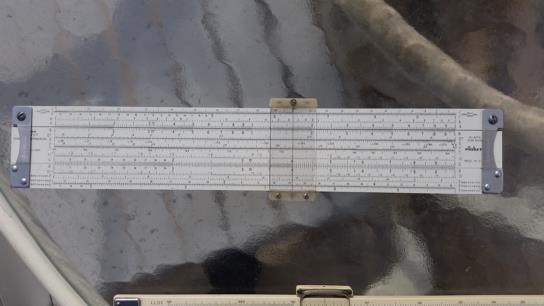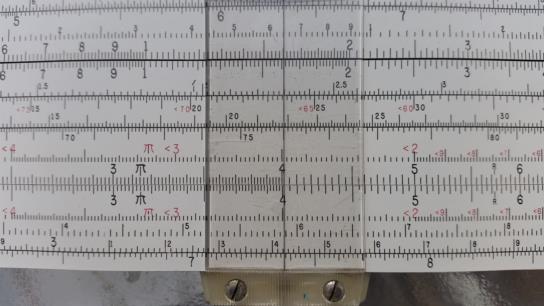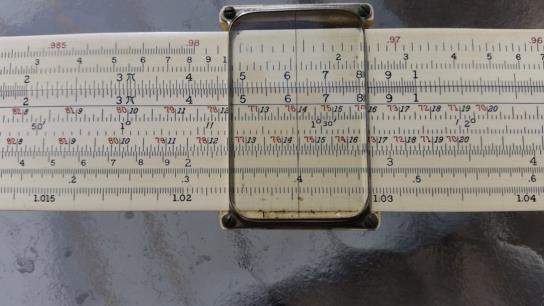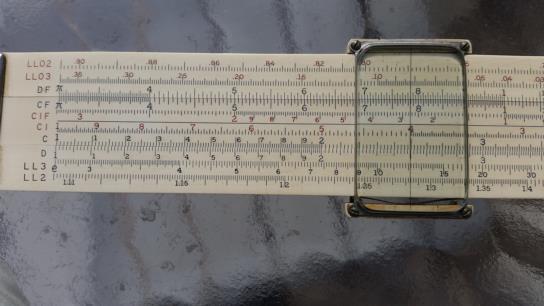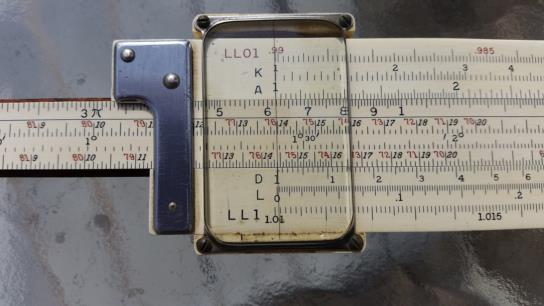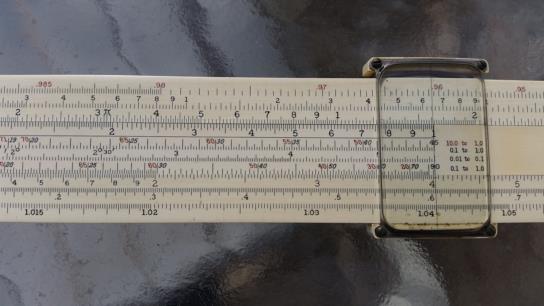
NavList:
A Community Devoted to the Preservation and Practice of Celestial Navigation and Other Methods of Traditional Wayfinding
Re: Traditional navigation by slide rule
From: Gary LaPook
Date: 2016 Jan 19, 16:40 -0800
K&E 5 Then the cursor is moved to the right index on the "C" scale and the tan of 76 degrees is now found on the "D" scale. Then proceed as normal. No need to transfer the value from the "CI" scale to the "D" scale since it is already there.
From: Gary LaPook
Date: 2016 Jan 19, 16:40 -0800
Re: Traditional navigation by slide rule
From: Gary LaPook
Date: 2016 Jan 19, 21:05 +0000
I have been having a discussion with Bob and am forwarding one of my emails to him that have photos of the scales of both types of slide rules. That example looked at 76 degrees on the tan scale. You can see that the tan scale, at that point, has 10 divisions on the Pickett rule and 12 divisions on the K&E 4080-3 rule, each division on the K&E is 5 minutes while on the Pickett they are 6 minutes, not a significant difference in precision for the computation. But using the decimal rule means converting from minutes to decimals and then back into minutes during the computation, extra work and chances for errors. So, until the Nautical Almanac publishes its data in decimal degrees, and until all of our charts are republished with degrees of latitude and longitude divided into decimals instead of the current minutes, it will make more sense to use a slide rule marked in minutes, like the K&E 4080-3 than in decimals.
gl
It is easier to use a slide rule with two tan scales when doing the Bygrave computation but if you only have one then there is a technique to use.
The first photo shows my Pickett N 3-T that has the double tan scales. The next shows the cursor on the 76 degree mark on the second tan scale and the tan of 76 shown on the "C" scale at 4.01.
K&E 1 shows my K&E 4080 and K&E 2 shows the cursor on the 76 degree mark on the reversed tan scale. K&E 3 shows the slide rule turned over with the cursor now lined up on the "C!" scale at 4.01, the same value found on the Pickett.
This is the way Bob did it and then he had to transfer that value of 4.01 to the "C" or "D" scale, an extra step which intoduces an additional source of inaccuracy and possible error.
Now here's the trick.
K&E 4 shows the cursor set on the left index of the "D" scale with the 76 degree line on the tan scale lined up with the cursor.
K&E 5 Then the cursor is moved to the right index on the "C" scale and the tan of 76 degrees is now found on the "D" scale. Then proceed as normal. No need to transfer the value from the "CI" scale to the "D" scale since it is already there.
Gary


